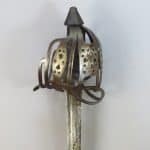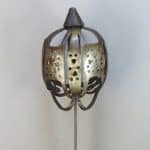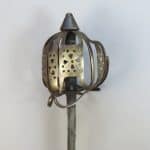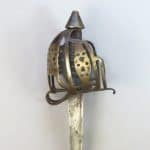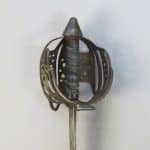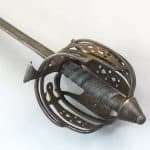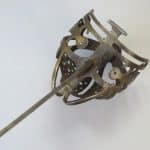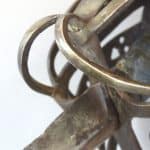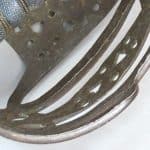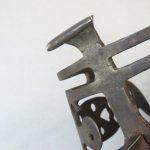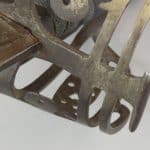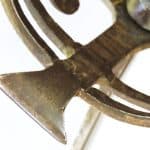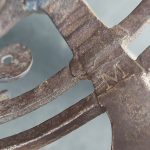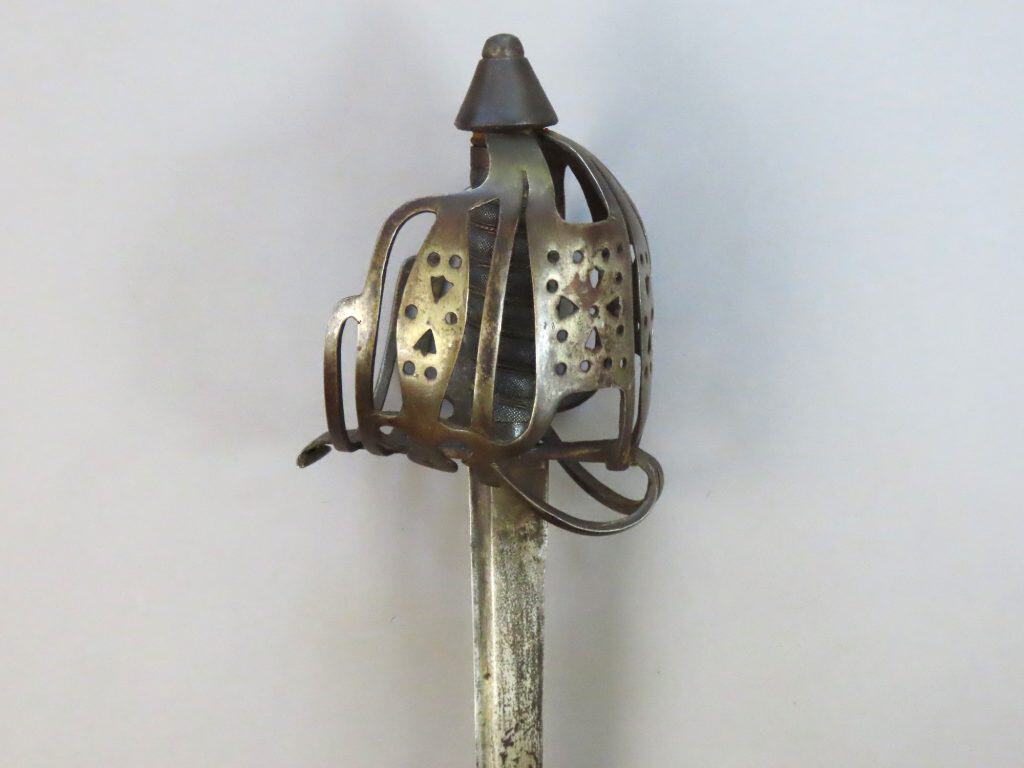
Scottish Military Basket Hilted Sword dating to 1750 to 1760 with the maker’s mark “M” stamped inside the Hilt
To enquire about this itemplease click here
Price: £3,450
Ref: 42021870
Item Description
Scottish swords of this distinctive type were made for infantry soldiers serving in Highland Regiments. The style of hilt was developed in Glasgow which was already famous for the manufacture of traditional Scottish basket hilted swords since at least the early 17th century. The hilt type is a simplified version of the more usual Scottish sword type of the mid-18th century.
Around 1757 production of these swords transferred to England as demand grew due to the increasing numbers of Highlanders being recruited into the newly raised Highland regiments in the British Army. England was better placed to fulfill bigger contracts in a more cost-effective and timely manner. Production fell into the hands of one firm first owned by Nathaniel Jeffreys then from 1771 by Dru Drury. Jeffreys and Drury employed backsword blades with single fullers and generally stamped their blades both sides in a similar manner and size with a crown, “G R” beneath and their surname below. These swords were of poorer quality than those previously produced in Scotland although of the same style. The hilts were cut from sheet iron which was bent into shape. The Scottish made swords were forged from thicker bars of iron in the traditional manner and were more robust.
The hilt of the sword featured here is forged in the traditional manner and dates to the period before production moved to Jeffreys and Drury. Hence we date this sword to the 1750’s. It is signed with a maker’s mark of a letter “M” inside the hilt which may be the initial of Alexander Magget or John Melvill, both booked as journeymen in 1739 and 1742 respectively to John Simpson (II), who was the most important sword maker in Glasgow in the second quarter of the 18th century. He probably died in 1749 when his will was recorded. The sword dates to the early period of the Highland Regiments and may have been used in North America in the French and Indian War (1754 to 1763) which was a theatre of the Seven Years War in Europe. The Highland Regiments gave up their swords in 1784 when production of this sword type ceased.
The sword described here is a representative example. The primary and secondary guard plates are pierced with circles and triangles. The pommel is cone shaped with an integral button on top. The tops of the three arms of the guard are secured under a lip which extends around the pommel base. The grip is made of spirally grooved wood mounted with a covering of shagreen and bound with plaited wire and mounted with iron bands top and bottom.
The single edged blade has a fuller running underneath the blunt back edge and is 31 inches (79 cm) long. The overall length of the sword is 37.25 inches (94.5 cm). Overall the iron and steel parts are in fine condition with mottled age staining.
For general reading on the sword type see Anthony D Darling, Swords for the Highland Regiments 1757 – 1784, Mowbray Incorporated, 1988. And for other examples see Cyril Mazansky, British Basket-Hilted Swords, Boydell Press / Royal Armouries, 2005, pages 129 to 130. And John Wallace, Scottish Swords and Dirks, Arms and Armour Press, 1970, fig 42, for a sword in the National Museums of Scotland, collection reference LA 27.


